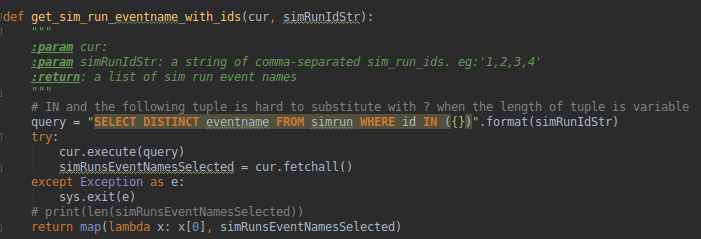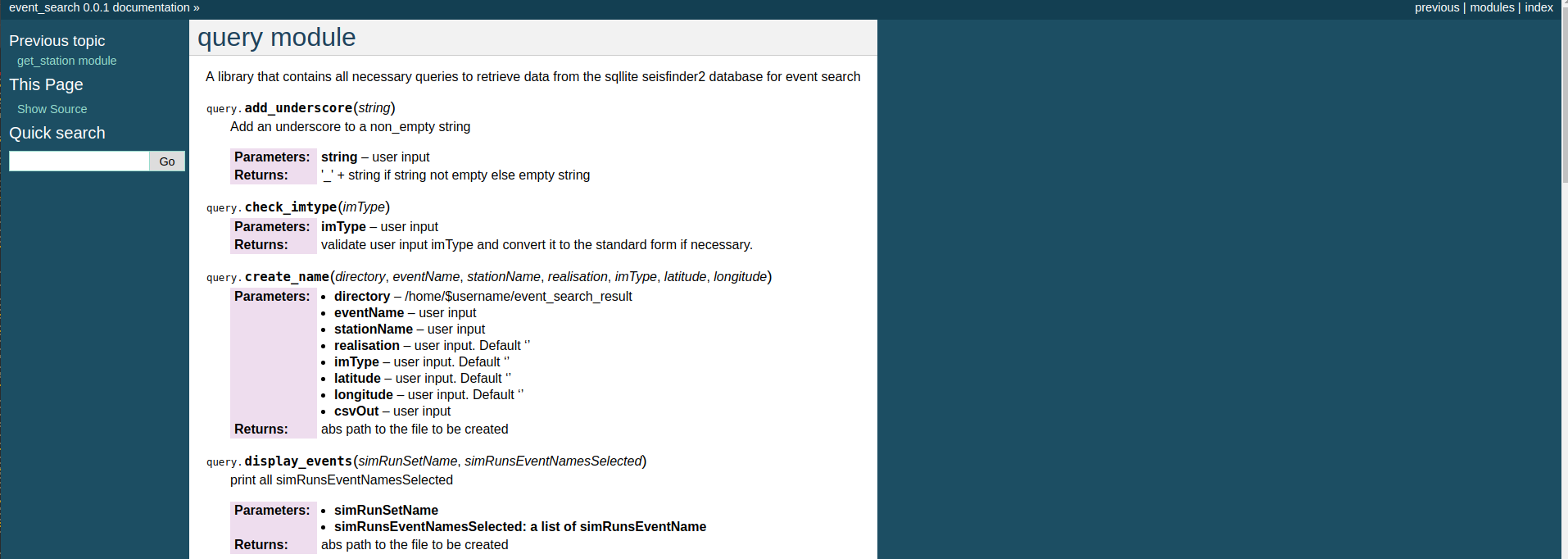Sphinx is the software package that we use to document our SW projects.
Why Sphinx:http://www.sphinx-doc.org/en/master/
AUTO GENERATION OF DOCUMENTATION AS LONG AS YOU HAVE NICELY STRUCTURED DOCSTRINGS!
- Specially created for Python, which is our project language
- Output formats: HTML (including Windows HTML Help), LaTeX (for printable PDF versions), ePub, Texinfo, manual pages, plain text. You can always manually modify the HTML if bugs appear in the documentation
- Extensive cross-references: semantic markup and automatic links for functions, classes, citations, glossary terms and similar pieces of information
- Hierarchical structure: easy definition of a document tree, with automatic links to siblings, parents and children
- Automatic indices: general index as well as a language-specific module indices
- Code handling: automatic highlighting using the Pygments highlighter
- Extensions: automatic testing of code snippets, inclusion of docstrings from Python modules (API docs), and more
Tutorials
1. syntax guide: https://thomas-cokelaer.info/tutorials/sphinx/rest_syntax.html
2. quick start (from 6:14) : https://www.youtube.com/watch?v=qrcj7sVuvUA
Important format to follow while writing your function docstrings:
- parameters using :param <name>: <description>
- type of the parameters :type <name>: <description>
- returns using :returns: <description>
- examples (doctest)
- seealso using .. seealso:: text
- notes using .. note:: text
- warning using .. warning:: text
- todo .. todo:: text
- do not mix tabs and space
Otherwise, sphinx would fail to recognise the docstrings and could end up with sth like:
Instead of the correct one like:
If we then look at the docstrings of the two functions, the differences are that get_sim_run_eventnames does not have a ':' following 'simRunSetName' or ':return'
Sample output






